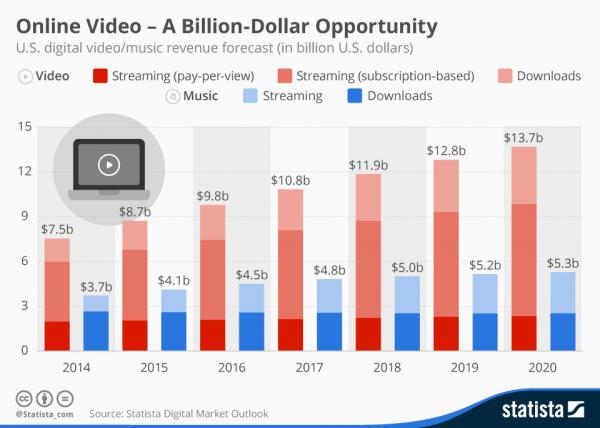Livestreaming platform DingIt.tv has built an audience of over 11 million fans through daily eSports programming in high definition. While the livestreaming space is currently dominated by larger companies like Twitch and YouTube, this European startup has focused on 1080p content around games like Starcraft II and Counter-Strike: Global Offensive. Adam Simmons, director of content at DingIt.tv, explains the company s growth strategy and outlines its plans for 2016 in this exclusive interview.
What differentiates DingIt from the many other live streaming companies out there
When we first set out to create DingIt, we aimed to solve some of the issues with livestreaming like the huge running costs, quality issues for users based on their location, and poor performance on mobile. We soon realized we needed to build from the ground up to provide a better technical solution to live HD streams. Working with strategic partners and our own development team, we developed a completely new solution that provides a stable, full HD stream globally. The DingIt platform makes it possible to get 1080p 60 frames per second streams on a global scale, while still reducing the amount of buffering viewers get (by up to 27x) and reducing the bandwidth they need to view.
As well as the improved viewing experience for gaming audiences, our technology also presents some clear commercial advantages for content creators. DingIt operates at a fraction of the cost of other platforms, which means we can pass these cost benefits on to our content creators. We are able to further improve this position through some innovative tech that prevents both ad blocking and unauthorized re-streaming, creating significant advantages for our advertising partners too. The net effect is that we are able to generate more revenue per viewer, the proceeds for which we are able to reinvest in content and a market-beating revenue share for broadcasters and content creators.
Who are you targeting with this platform and how are you targeting them
DingIt is an open platform, which means anyone from the biggest events to the most niche streamers are welcome to broadcast, which in turn attracts a broad audience. Long-term our target is anyone who wants to see the best gaming anywhere in the world. We need to provide the right kind of content for our hardcore audience, making sure there is always a route in for lighter gaming fans. Our current focus is on eSports and most of our investment in content is concentrated in this space. Since launching, we have focused on providing consistent daily and weekly eSports events; our primary aim being to generate a sustainable program schedule for our audience, content creators, and pro players. Looking ahead to 2016, we will be growing this investment significantly and we will be announcing how this will take shape in the coming weeks.
In addition to the creation of eSports events, we are expanding our global operations. One of the key technical benefits of DingIt is our global reach, as viewing experience isn t affected by a viewer s location. As a direct result, we are expanding rapidly into Asia (with the recent launch of dingit.kr) and emerging markets such as South America and China. As a platform, we hope to be able to bring a consistent and quality experience to gamers around the world. Most of the content we create is broadcast with local language commentary in real time, so we are finding it very easy to scale whilst making it possible for pro-players to reach new audiences.
What type of growth have you seen since launching
We’ve seen incredible growth over the last 10 months, beating our forecasts and exceeding all expectations. Since we launched in open beta back in February, we’ve grown at an average rate of 132 percent per month and we have just hit 11 million uniques in October — a massive achievement and one we are very proud of.
Do you have any sense of these users coming from competing streaming services or are they new to streaming
The majority of our viewership is attracted to our eSport events, which are found on multiple community sites and forums. As these viewers are already interested in eSports, we assume that many of them have used other streaming services as well. In addition to our rapid month-on-month growth, we are seeing around 32 percent returning viewers, which means people are coming back to the site to watch more content. We want to make content people enjoy, and returning viewers are one of the biggest indicators it is working.
We produce highlights from all of our content, which is aimed at a more casual gaming audience to start, piquing their interest in competitive gaming. We love eSports and gaming, and there is still a huge untapped market just waiting to experience their first proper event. By producing content for casual gamers as well as our core audience, we hope to bring more young people into gaming.
What role has eSports played in your marketing
ESports has been our primary viewership driver in 2015. We made the decision early on to invest heavily in eSport events and plan to expand this even further in 2016. Since launching our open beta, we have invested around $250,000 in eSport events; the main aim of this has been sustainable growth. We deliver content daily, rather than investing in one-off or monthly events. This creates an environment where both content creators and pro players are able to generate a consistent income and bring much-needed stability to the market.
How do you choose which games and leagues to focus on
As the newest entrant in the market, we have to balance our investment, between the games that already have a large audience base and exciting new titles that show future potential. We are also fully aware that we are helping fund a community of pro players and fans, and as such feel that we have a duty of care to make sure what we do is sustainable. It s very frustrating to see teams/players/fans committing to an event series for it to be cancelled because it isn t viable over the long term. DingIt will always look to explore content opportunities that work over longer periods, and our technology helps make that possible.
How much audience is out there to tap into given the huge reach of Twitch and the power of YouTube
The gaming audience shows little in the way of brand loyalty. Viewers search for and watch content wherever it is available. One way we are trying to change that is by using our technology to provide higher quality streams for an improved experience, especially outside of the US and Western Europe, where quality on some platforms can be poor.
The global reach for eSports in 2014 was 100.6 million and is estimated to increase to 188 million in 2015 and 238 million in 2017. As the fastest-growing platform for gaming and eSports in the world right now, we hope to capitalize on this audience explosion — both those new to gaming and those seeking a better gaming experience than on existing platforms.
What type of growth forecast do you have for your company for 2016
It has been a really exciting year for us and we re looking forward to continuing this strong growth in 2016. We’re keeping exact numbers close to our vest for now, but we fully expect to pull in big audiences searching for higher quality streams with less buffering.
What opportunities do you see your platform opening up for marketers and brands
Having a large team of developers that are extremely smart has meant we have already been able to harness the true potential of programmatic advertising. We built our own ad stack and yield optimization tools, which are proving very effective. But this is just the beginning.
With our technology, DingIt can help brands utilize livestreaming in regions that aren t currently served well by other platforms. Engaging these emerging audiences isn t just for gaming-specific brands either. For example, being the first energy drink associated with eSports in a new market offers huge potential.
Opportunities in western markets are very important, but we are acutely aware that audiences are growing all over the world and we need to plan for this accordingly. To this end, we are bringing in an experienced media team who will create sponsorship opportunities for our brand partners across our new international events series throughout 2016. We see opportunities extending beyond events though, into technology and strategic partnerships and we are incredibly excited to have had such a positive start.
What types of companies have you been working with to date and how do you see that evolving
Whilst gaming is our first love and the thing that gets us up every morning, it is quickly becoming apparent that there are lots of applications for the technology that underpins our platform. From publishers that want to push out video efficiently, to live event streams, to drone video tech, and citizen journalism. Currently, conversations are confined to the partners and players in the gaming space, but we believe there are many more uses for our tech and we are only just scratching the surface.
Our tech and management team have a strong background in network products, and our most important partner is Akamai. Some of our technology is integrated with their network acceleration products. Akamai and DingIt have been working for the last one and a half years to integrate the technologies that underpin the DingIt streaming platform. As a result, at the recent Edge Conference, DingIt was chosen to present as the best consumer facing user case of the new technology, which we were honored to do.

 [a]listdaily spoke to Paul Milewski, PR Manager and Marketing Coordinator at Techland, about fighting zombie hordes and what it takes to independently promote an exceptional game.
[a]listdaily spoke to Paul Milewski, PR Manager and Marketing Coordinator at Techland, about fighting zombie hordes and what it takes to independently promote an exceptional game.